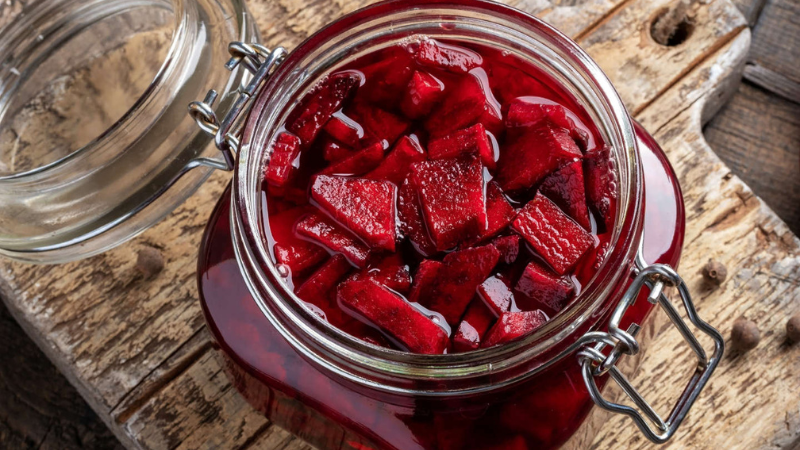How to Make Beet Kvass – Are you ready to learn more about fermented drinks? Look no further than the delightful and health-boosting elixir known as Beet Kvass. Packed with nutrients and an array of potential health benefits, this traditional Eastern European drink has been gaining popularity worldwide.
If you’re curious about how to make this vibrant, probiotic-rich tonic at home, you’ve come to the right place. In this comprehensive guide, we’ll walk you through the step-by-step process, ensuring you have all the necessary information to embark on your beet kvass-making journey.
Table of Contents
ToggleNutritional value and health benefits Of Beet Kvass
Before learning How to Make Beet Kvass, you must know its nutritional and health benefits. Beet Kvass, the fermented tonic derived from beets, is not only celebrated for its tangy flavor but also for its impressive nutritional profile and potential health benefits. Packed with an array of essential nutrients, Beet Kvass has garnered attention for its potential positive impact on overall well-being. Here is a closer look at the nutritional value and the potential health benefits associated with this vibrant elixir:
Nutritional Value
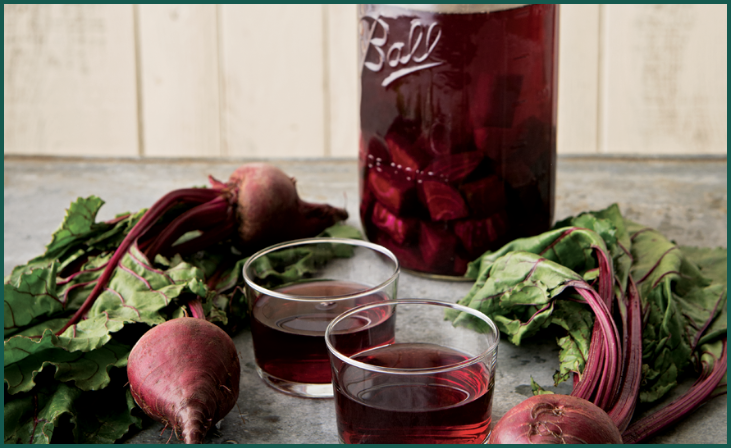
- Vitamins: Beet Kvass is a notable source of essential vitamins, including vitamin C, which contributes to immune function and skin health, and B vitamins, which play a vital role in energy production and nerve function.
- Minerals: Rich in minerals such as potassium, magnesium, and iron, Beet Kvass can help support various bodily functions, including muscle and nerve function, blood pressure regulation, and oxygen transport.
- Antioxidants: Beets contain powerful antioxidants like betalains, which may help reduce inflammation and protect cells from oxidative stress, potentially lowering the risk of chronic diseases.
Health Benefits
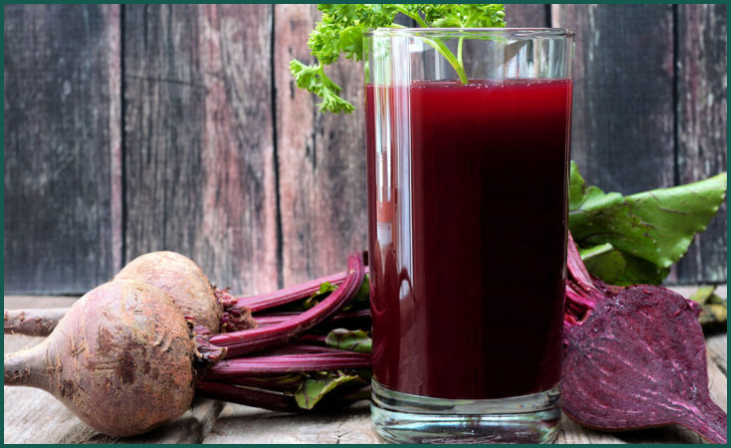
- Digestive Health: The probiotics produced during the fermentation process of Beet Kvass can promote a healthy balance of gut bacteria, potentially aiding digestion and enhancing nutrient absorption.
- Detoxification Support: The betalains in beets have been associated with supporting the body’s natural detoxification processes, particularly in the liver, by assisting in the elimination of toxins and waste products.
- Potential Blood Pressure Regulation: The nitrates present in beets may help promote healthy blood flow and blood pressure levels, contributing to cardiovascular health and possibly reducing the risk of heart-related conditions.
- Potential Anti-Inflammatory Properties: The betalains and other antioxidants found in Beet Kvass may help reduce inflammation in the body, potentially alleviating symptoms associated with inflammatory conditions.
While the consumption of Beet Kvass may offer these potential benefits, it is important to remember that individual responses may vary. As with any dietary changes or supplements, consulting a healthcare professional is advisable, particularly for individuals with existing health conditions or specific dietary concerns. Incorporating Beet Kvass as part of a balanced and varied diet may contribute to an overall healthy lifestyle.
Also Read: How to Make Kombucha
How to Make Beet Kvass?
Making Beet Kvass at home is a simple and rewarding process that allows you to create your own batch of this vibrant and nutritious fermented beverage. Follow these step-by-step instructions to embark on How to Make Beet Kvass:
Gather the Ingredients
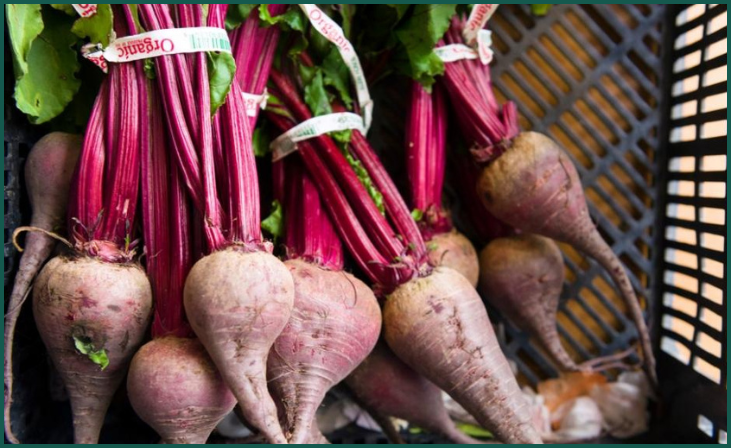
- 2-3 medium-sized organic beets, washed and peeled
- 1/4 cup of unrefined sea salt or Himalayan salt
- Filtered water
- A clean, wide-mouthed glass jar for fermentation
Prepare the Beets
- Cut the beets into small, uniform cubes or slices to aid in the fermentation process.
- Place the prepared beets in the glass jar, filling it about one-third to one-half full.
Add the Salt and Water
- Dissolve the salt in a small amount of filtered water to create a brine solution.
- Pour the brine over the beets in the jar, ensuring they are fully submerged. Do not fill the whole jar. Leave some room at the top.
Fermentation Process
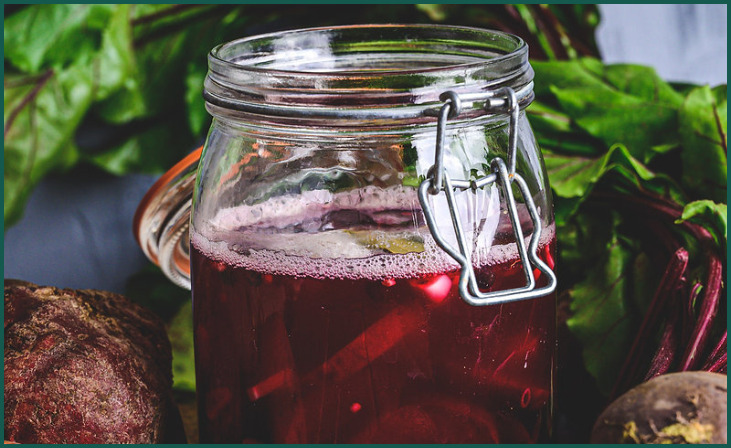
- Loosely cover the jar with a clean cloth or paper towel, securing it with a rubber band to allow air to flow while preventing contaminants.
- Store the jar at room temperature, away from direct sunlight, for 3 to 7 days, depending on your desired taste and the ambient temperature. Remember to burp the jar daily to release built-up gases.
Monitoring the Fermentation
- Keep an eye on the color change of the water. A deep, rich color indicates the fermentation process is underway.
- Taste the Beet Kvass intermittently to gauge its flavor. Once it reaches your preferred level of tanginess, you can proceed to the next step.
Straining and Storing
- Using a fine-mesh sieve or cheesecloth, strain the liquid from the beets into a clean glass container.
- Discard the fermented beets or reserve them for other culinary uses.
- Seal the Beet Kvass container with an airtight lid and refrigerate it to slow down the fermentation process and preserve its flavor.
Serve and Enjoy
- Serve the chilled Beet Kvass as a refreshing and probiotic-rich beverage.
- Feel free to garnish with fresh herbs or citrus slices for added flavor and visual appeal.
By following these steps, you can create your very own Beet Kvass, ready to be enjoyed as a nourishing and flavorful addition to your daily routine. Experiment with different variations and flavors to find the perfect blend that suits your taste preferences.
Don't just scroll, subscribe!
BuzzTrail's unique web-stories are the cure for boredom you've been waiting for.
Also Read: Kefir Helps Non-Alcoholic Fatty Liver Disease
Common Mistakes to Avoid in Beet Kvass Making
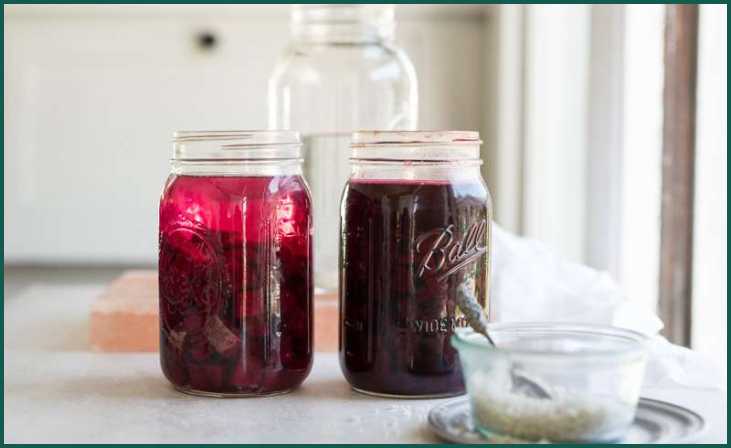
After learning How to Make Beet Kvass, you must also know common mistakes to avoid in BEET Kvass. To ensure a successful and enjoyable Beet Kvass-making experience, it’s crucial to be aware of common pitfalls that may affect the fermentation process and the overall quality of the final product. Here are some key mistakes to avoid when making Beet Kvass at home:
- Using Tap Water: Avoid using tap water that contains chlorine or other chemicals, as they can inhibit the growth of beneficial bacteria during fermentation. Opt for filtered or purified water to create an optimal environment for the fermentation process.
- Insufficient Salt: Failing to use the recommended amount of salt can lead to an imbalanced fermentation process, potentially resulting in spoilage or an undesirable taste. Ensure the proper ratio of salt to water and beets to maintain a healthy and flavorful fermentation.
- Overfilling the Jar: Overfilling the fermentation jar can lead to overflow and messy leaks during the fermentation process. It’s essential to leave some headspace at the top of the jar to accommodate the gases produced during fermentation.
- Inadequate Burping: Neglecting to “burp” the jar regularly to release built-up gases can cause excessive pressure to build up, potentially leading to jar breakage or explosion. Remember to burp the jar daily to prevent any mishaps and maintain a smooth fermentation process.
- Improper Storage Conditions: Storing the Beet Kvass in an area exposed to direct sunlight or extreme temperature fluctuations can disrupt the fermentation process and compromise the quality and taste of the final product. Keep the jar in a cool, dark place to ensure consistent fermentation.
- Using Metal Containers or Utensils: Avoid using metal containers or utensils during the fermentation process, as they can react with the acidic nature of the Beet Kvass and compromise its flavor and quality. Opt for glass, ceramic, or food-grade plastic materials for the best results.
- Ignoring Signs of Spoilage: Disregarding any unusual odors, colors, or textures during the fermentation process can result in the consumption of spoiled Beet Kvass, which may lead to adverse health effects. Be vigilant and discard the batch if you notice any signs of spoilage or contamination.
By steering clear of these common mistakes, you can ensure a smooth and successful Beet Kvass-making process, yielding a flavorful and healthful tonic that you can enjoy with peace of mind.
Also Read: How to Make Ginger Bug
Conclusion
Incorporating Beet Kvass into your routine can be a simple yet impactful way to promote your overall well-being. With its tangy flavor profile and potential health benefits, this homemade tonic can become a staple in your wellness regimen.
By following the guidelines outlined in this guide, you’ll be well-equipped to create your own batch of this nourishing beverage, adding a touch of ancient wisdom to your modern lifestyle. Get ready to savor the goodness and potential benefits of this homemade Beet Kvass. We hope this blog has cleared all your queries on How to Make Beet Kvass.
FAQs
What are the health benefits of drinking Beet Kvass?
What are the health benefits of drinking Beet Kvass?
Beet Kvass offers a myriad of potential health perks, including improved digestion, enhanced liver function, and a potential boost to the immune system. It’s also rich in valuable nutrients like vitamins, minerals, and beneficial enzymes.
How long does it take to ferment Beet Kvass, and what’s the best way to store it?
How long does it take to ferment Beet Kvass, and what’s the best way to store it?
The fermentation process for Beet Kvass typically takes anywhere from 3 to 7 days, depending on various factors such as temperature and desired taste. To store it properly, refrigeration is key. Make sure to keep it in an airtight container to maintain its flavor and probiotic potency.

